Welcome to one of the most active flamenco sites on the Internet. Guests can read most posts but if you want to participate click here to register.
This site is dedicated to the memory of Paco de Lucía, Ron Mitchell, Guy Williams, Linda Elvira, Philip John Lee, Craig Eros, Ben Woods, David Serva and Tom Blackshear who went ahead of us.
We receive 12,200 visitors a month from 200 countries and 1.7 million page impressions a year. To advertise on this site please contact us.
|

|
|
RE: Flamenco Theory/Structure books
|
You are logged in as Guest
|
|
Users viewing this topic: none
|
|
Login  | |
|

   
Ricardo
Posts: 14828
Joined: Dec. 14 2004
From: Washington DC

|
 RE: Flamenco Theory/Structure books (in reply to orsonw) RE: Flamenco Theory/Structure books (in reply to orsonw)
|
|
|
quote:
ORIGINAL: orsonw
quote:
ORIGINAL: Brendan
I’ve been curious about this since I read this discussion, so I finally got round to pulling Whitney’s article as an inter library loan. Here it is:
https://drive.google.com/file/d/1NIcteDUWX4F7p1Izrm2woScLb0VBXNzf/view
Thanks for posting about flamenco!
Simon, foro name 'johnnefastis' isolated the vocals and added a percussion track. 1st letra uploaded in thread linked below. I contacted Simon and he sent me the whole cante, maybe he still has it for others interested? Also for others interested search foro 'Juan Talega Solea' for plenty of previous discussions. Then get on over to the cante accompaniment thread! It's been quiet lately.
http://www.foroflamenco.com/tm.asp?m=124692&appid=&p=&mpage=30&key=juan%2Ctalega%2Csolea&tmode=&smode=&s=#343834
Also there is another article about the same recording. I think written by foro member 'Steelhead'.
https://academicworks.cuny.edu/cgi/viewcontent.cgi?article=1325&context=jj_pubs
Brendan only scanned in the transcription. There are 4 more pages or so of introduction that explains the “music theory” of flamenco and THAT is the thing that I found very agreeable compared to ANYTHING else I have read that supposedly treats the subject the OP requested. (It carries through the transcription, but that analysis is more about functionality within flamenco genre, not necessarily relatable to Musicology in general). Simply put different disciplines have a totally different language and to talk about one while only using ONE language is not helpful, it is like only talking or targeting to a tiny audience of those knowledgeable of the subject and language. I have been researching Renaissance music lately and have had to get used to that bizarre theoretical language. On a FEW occasions I get a footnote translation into modern classical music theory speak and like “OH!!! Now I get it!”. Plus, in vihuela, you find Spanish equivalents. Here is an example. “Canto llano”=Plainchant=Gregorian chant=boring practically monotone priest singing of medieval times that all sounds Dorian mode-ish, or simply, the boring old melody that the song is based on, now to be highly decorated by interesting accompaniments. And things like “clausula/clausulae”=musical cadence/cadences or “chord progressions” produced by various moving voices, normal already set as standardized sequences applied as needed or desired to textual phrases. These old musical devices eventually give way to the modern concepts of PAC or IAC cadences of classical music, and the need for Roman Numerals to describe function. And these give way to jazz 2-5-1 sequences, or in flamenco, the remates, cierres, contestas for the cante, etc. So this basic concept of translation is often avoided and therefore I see tons of confusion on the subject where suddenly unrelated concepts become descriptors such as “hijazz” or “Makam” or “Greco dorico” etc, not helping at all.
_____________________________
CD's and transcriptions available here:
www.ricardomarlow.com
|
|
|
|
REPORT THIS POST AS INAPPROPRIATE |
Date Sep. 3 2023 16:00:48
 |
|

   
Ricardo
Posts: 14828
Joined: Dec. 14 2004
From: Washington DC

|
 RE: Flamenco Theory/Structure books (in reply to Brendan) RE: Flamenco Theory/Structure books (in reply to Brendan)
|
|
|
quote:
ORIGINAL: Brendan
Aha, that makes sense. Here is the table of contents for that whole issue:
41 1976 Winter Cover: V. Bobri
Illustrations and Decorations: V. Bobri, G. d'Alessio, George Giusti, A. Petruccelli
Articles:
End of a Life-Style ...D. E. Pohren
Flamenco: An Overview ...Brook Zern
The Gypsies – Four Etchings, c. 1621 ...Jacques Callot
Structure and Variations in Flamenco Song and its Guitar Accompaniment ...Carol Whitney
Manuel de Falla: The Guitar and His Music ...Betty Keim
On Sargent's "El Jaleo" ...Gregory d'Alessio
New Books ...P. K. Thomajan
Introducting New Contributors
Fernando Sor Memorial Fund
Music:
Soleares de Alcalá ...trans. by Carol Whitney
Soleares ...Sabicas (Agustín Castellon)
Soleá ...Julián Arcas
So the bit you’re talking about would be Whitney’s article “Structure and Variation in Flamenco Song…”, right?
Yes sir, it precedes the transcription part you posted and is the required reading to make sense of her interpretation and scoring method. I particularly like how she isolated the “Cambio” (as she makes clear to not confuse with an entire letra style changing, but the relative major chord change all the cantes por Soleá utilize on the penultimate line of verse) with 3 versions, two where the singer delivers a decending scale to E and one where the decending scale emphasized G (G-F#-G), and explained that both methods can be used to signal the chord change to C major for the guitarists. A recent argument with Romerito I pointed out the rare cases where a drop down to C natural is even more revealing to me, because that provides a third option which spells out a C chord (C-E-or G) and justifies the traditional use of that chord in the third line of verse. It was something I never really payed much attention to while learning, thinking “why if they sing E all the time is it a rule to play a C major chord?”. Also noticing later in the game how Morao would always flip the chords F-C7 vs C7-F (equivalent of C-G7 por medio), in Por medio, and later still noticed many players doing this sort of randomly, even in Siguiriyas. So it struck me that the cambio might be delivered with that G-F#-G enough times that some guitarists thought to play it “safe” with a catch-all plagal cadence so the cambio is expressed, yet it is vague if it is relative major or Dominant harmony.
Anyway, if you read through that portion of her article that leads up to the score analysis, I feel her general sentiment is EXACTLY how I have always felt about the music theory situation. I also like that she chose letra performances that are “out of the box” so that her 12-count modules are broken physically and we must visualize the singer going out of the box and see how the guitarist deals with it.
_____________________________
CD's and transcriptions available here:
www.ricardomarlow.com
|
|
|
|
REPORT THIS POST AS INAPPROPRIATE |
Date Sep. 4 2023 18:29:01
 |
|

   
Mark2
Posts: 1872
Joined: Jul. 12 2004
From: San Francisco

|
 RE: Flamenco Theory/Structure books (in reply to silddx) RE: Flamenco Theory/Structure books (in reply to silddx)
|
|
|
Mariano was my first flamenco teacher. I can't say enough about him. The music in the book is very basic and a good place for beginners to start. During lessons, he would mark up the books, adding more complex variations.
I'll never forget the first time he showed me bulerias-he recorded about 30 seconds of compas and told me it was going to drive me crazy. He said you have to play with the rhythm, like a cat plays with a mouse. Needless to say, it took me a long time to replicate that feel.
His history in flamenco is very interesting. He played for Antonio, the most famous dancer of his era, after growing up in dire poverty. His mother paid for lessons from Raphael Nogales, and he ran home after every lesson so he'd remember the falsetas he was taught. Said he never forgot a single one.
After moving to San Francisco, he started teaching. He lent his 1930 Santos to Lester Devoe, who was his student at the time, for him to take measurements so he could build his first guitar. When he showed it to Mariano, he told him it was good guitar, good enough to sell.
He was also David Serva Jones' first teacher. In fact many of the guitarists in the San Francisco Bay Area spent time in his studio.
I studied with him for five years, too long in retrospect, but he was a father figure to me, and I'll always treasure the time I spent with him. He gave me so many gigs, I earned way more than I ever spent learning from him.
He did the old four finger continuous ras and it sounded so powerful it was a like a train rolling down the tracks. His concerts were sold out, and he knew how to entertain an audience, skills he taught his students. I have all his books, and learned everything in them. He had another student that he'd use to motivate us both. "You are doing good, but Alberto is coming along quickly"
Albert told me he still plays mostly stuff he learned from him.
He was a great guitarist, teacher, and man.
quote:
ORIGINAL: silddx
Anyone familiar with this one? I picked up a used copy from a charity shop a couple of weeks ago for pocket change. It has a fair bit of useful commentary and background on various palos and flamenco history. I like it. Yet to try any of the pieces as I'm concentrating on what I was advised to in another thread.
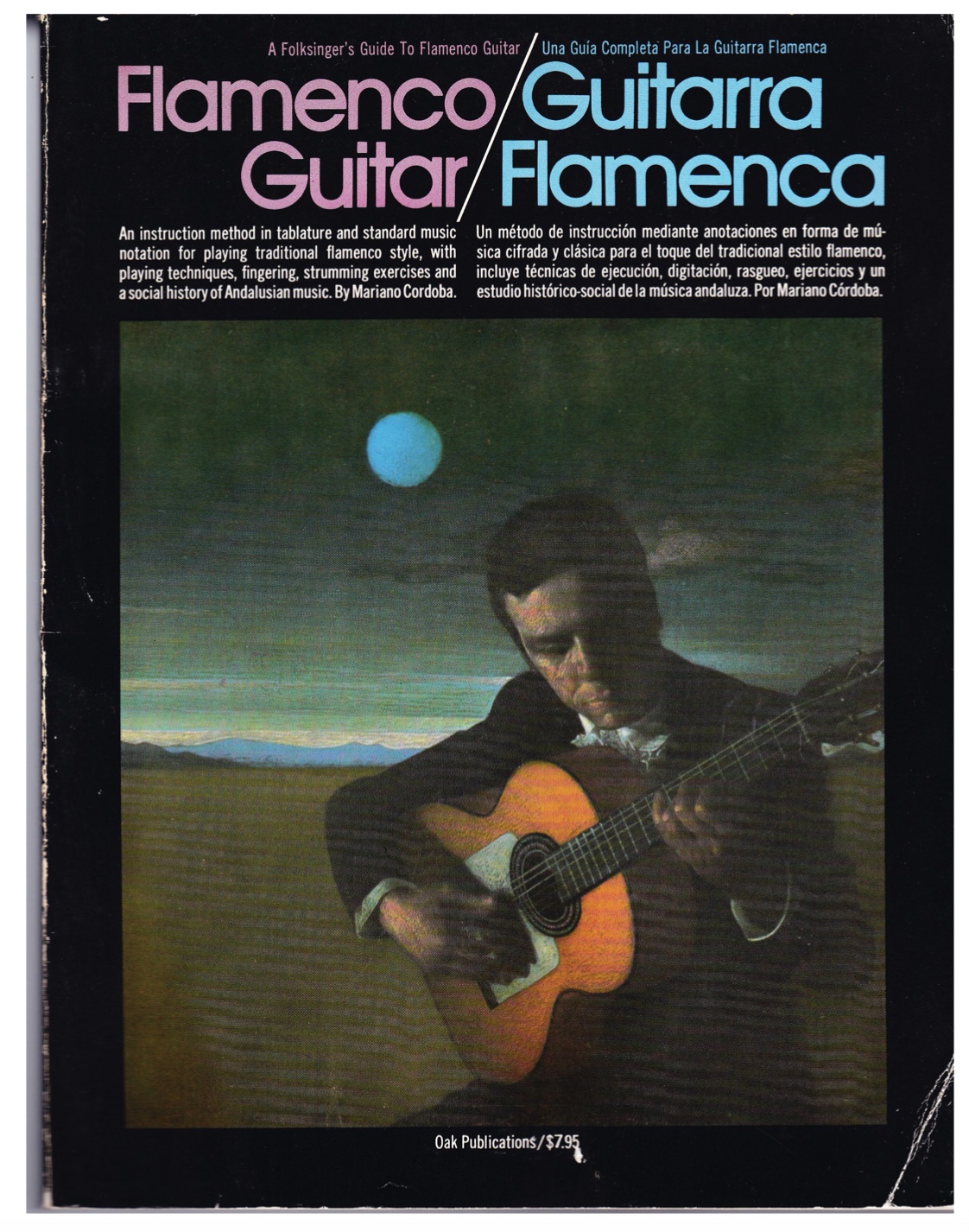
Images are resized automatically to a maximum width of 800px
|
|
|
|
REPORT THIS POST AS INAPPROPRIATE |
Date Sep. 6 2023 17:00:09
 |
|

   
silddx
Posts: 570
Joined: May 8 2012
From: London

|
 RE: Flamenco Theory/Structure books (in reply to Mark2) RE: Flamenco Theory/Structure books (in reply to Mark2)
|
|
|
quote:
Mariano was my first flamenco teacher. I can't say enough about him. The music in the book is very basic and a good place for beginners to start. During lessons, he would mark up the books, adding more complex variations.
I'll never forget the first time he showed me bulerias-he recorded about 30 seconds of compas and told me it was going to drive me crazy. He said you have to play with the rhythm, like a cat plays with a mouse. Needless to say, it took me a long time to replicate that feel.
His history in flamenco is very interesting. He played for Antonio, the most famous dancer of his era, after growing up in dire poverty. His mother paid for lessons from Raphael Nogales, and he ran home after every lesson so he'd remember the falsetas he was taught. Said he never forgot a single one.
After moving to San Francisco, he started teaching. He lent his 1930 Santos to Lester Devoe, who was his student at the time, for him to take measurements so he could build his first guitar. When he showed it to Mariano, he told him it was good guitar, good enough to sell.
He was also David Serva Jones' first teacher. In fact many of the guitarists in the San Francisco Bay Area spent time in his studio.
I studied with him for five years, too long in retrospect, but he was a father figure to me, and I'll always treasure the time I spent with him. He gave me so many gigs, I earned way more than I ever spent learning from him.
He did the old four finger continuous ras and it sounded so powerful it was a like a train rolling down the tracks. His concerts were sold out, and he knew how to entertain an audience, skills he taught his students. I have all his books, and learned everything in them. He had another student that he'd use to motivate us both. "You are doing good, but Alberto is coming along quickly"
Albert told me he still plays mostly stuff he learned from him.
He was a great guitarist, teacher, and man.
Thank you so much for your anecdotes! Lovely to read!
|
|
|
|
REPORT THIS POST AS INAPPROPRIATE |
Date Sep. 6 2023 18:39:39
 |
|

   
Ricardo
Posts: 14828
Joined: Dec. 14 2004
From: Washington DC

|
 RE: Flamenco Theory/Structure books (in reply to devilhand) RE: Flamenco Theory/Structure books (in reply to devilhand)
|
|
|
quote:
ORIGINAL: devilhand
quote:
Mariano was my first flamenco teacher.
At page 24-28 Mariano Cordoba
https://www.laguitarra-blog.com/wp-content/uploads/2012/04/The-siguiriyas-song-form-in-flamenco.pdf
Please note example 3. On page 41. The claim that those exotic scales combine to function in the tonality of E (por Arriba) in Flamenco. The inventory collectively shows:
EFF#GG#ABCC#D and D#. (I put forth the B# is erroneous and should be expressed as analogous C natural). The reason this is incomplete as a concept is because both cante and falsetas at times necessarily express Bb, in various palos (striking example in Fandango de Lucena), and a simple “E Locrian” scale could possibly be added to the mixture. In the end, the entire concept can be discarded for two reasons:1. The combination spells out, simply, the CHROMATIC SCALE that all Western Tonal music might employ, and 2. The actual tempering of the intervals of the Makkams suggested, clash both with the guitar AND the actual singing of cantaores (who do not use any deliberate microtones inherent to makkams or they be by definition altered, ie, DIFFERENT MAKKAMS. They are nothing more than superficial analogous relative pitches to Western scales which, being on the line between two equal tempered notes, could just as easily fall to the accidental nearby as analogous such as F to G#, could be just as close an approximation as F# to G# or F to G natural).
By comparison Whitney discusses the situation much more accurately and succinctly, with emphasis on WESTERN CADENCES, and FORMAL STRUCTURE as demonstrated by the cante and its accompaniment (not just rhythm cycles). It is also important to note that the linked thesis is from 1995 and Whitney’s article is 1976, which has me scratching my head regarding submission acceptances etc. The only unfortunate thing was Whitney’s unreasonable suggestion to “temper” the guitar in response to cante, which has no basis and no examples, and in the end if attempted, is a “robbing peter to pay Paul” tonal compromise.
Since this thread was about MUSIC THEORY SOURCES about flamenco, I apologize for putting it back on track… the Marino Cordoba story is of course super interesting and important too.
_____________________________
CD's and transcriptions available here:
www.ricardomarlow.com
|
|
|
|
REPORT THIS POST AS INAPPROPRIATE |
Date Sep. 7 2023 13:42:57
 |
|

   
Mark2
Posts: 1872
Joined: Jul. 12 2004
From: San Francisco

|
 RE: Flamenco Theory/Structure books (in reply to kitarist) RE: Flamenco Theory/Structure books (in reply to kitarist)
|
|
|
I was referring to those folks who think flamenco is like jazz, rock, pop, etc, in that you play this scale over that chord, which is completely misguided IMO. "How do I get a flamenco sound?" Phrygian scale dude! Same for newbies who are thinking of composing falsetas and want to know what scale to use, for example, in solea. As you know, all the notes can work if you know the tradition.
quote:
ORIGINAL: kitarist
quote:
Ricardo you opened my eyes in one of your old posts when you wrote that the scale for flamenco is the chromatic, or something to that effect. I hadn't thought too much about it, but it's clear that is the case. Now I wince when I see someone write that flamenco is all phrygian.
Aren't these two different concepts, though (chromatic scale versus phrygian tonality)? I do wince when people refer to flamenco as being in phrygian mode.
Most (all?) of cante jondo flamenco is in phrygian tonality/key, some other palos are in major or minor tonality, and the whole corpus of [guitar playing in] flamenco shows that all possible notes are used, thus, flamenco [guitar] overall utilizes the chromatic scale. Yet a lot of flamenco is in Phrygian tonality/key.
|
|
|
|
REPORT THIS POST AS INAPPROPRIATE |
Date Sep. 8 2023 16:54:00
 |
|
 New Messages New Messages |
 No New Messages No New Messages |
 Hot Topic w/ New Messages Hot Topic w/ New Messages |
 Hot Topic w/o New Messages Hot Topic w/o New Messages |
 Locked w/ New Messages Locked w/ New Messages |
 Locked w/o New Messages Locked w/o New Messages |
|
 Post New Thread
Post New Thread
 Reply to Message
Reply to Message
 Post New Poll
Post New Poll
 Submit Vote
Submit Vote
 Delete My Own Post
Delete My Own Post
 Delete My Own Thread
Delete My Own Thread
 Rate Posts
Rate Posts
|
|
|
Forum Software powered by ASP Playground Advanced Edition 2.0.5
Copyright © 2000 - 2003 ASPPlayground.NET |
0.078125 secs.
|


 Printable Version
Printable Version








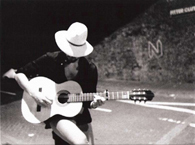
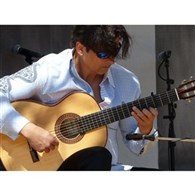



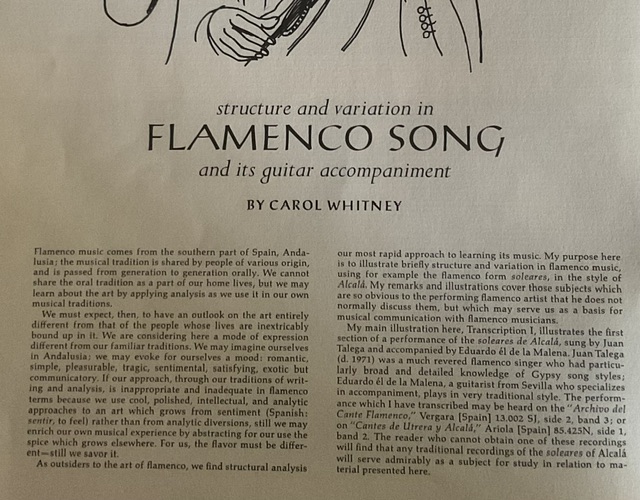
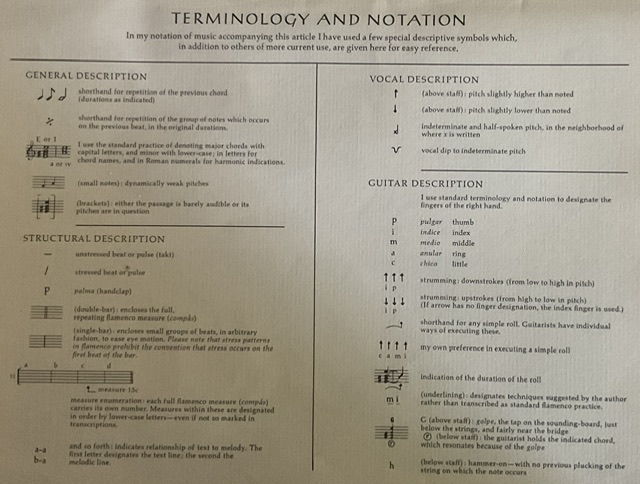
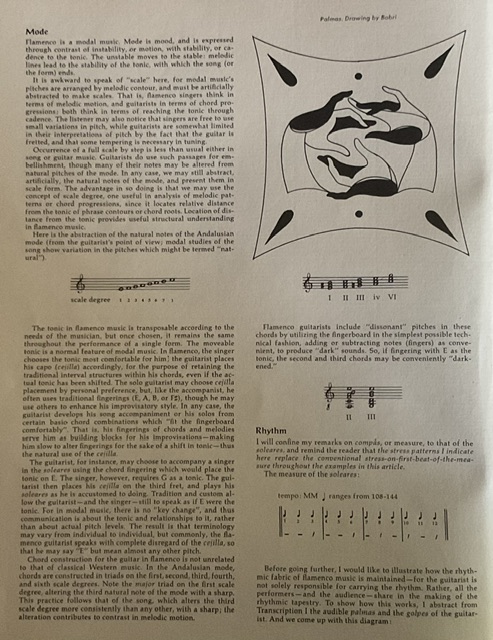
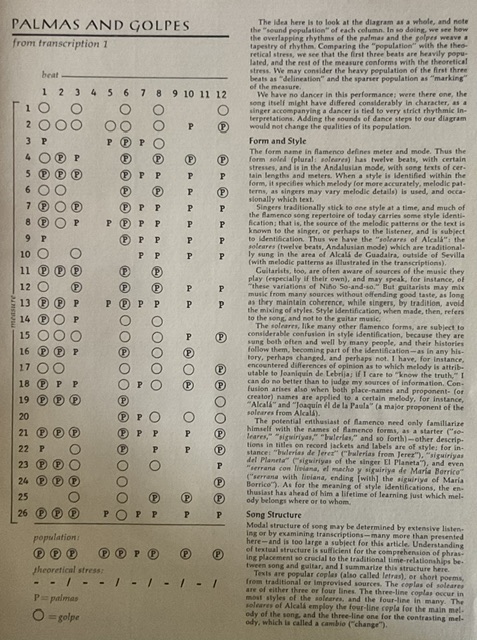
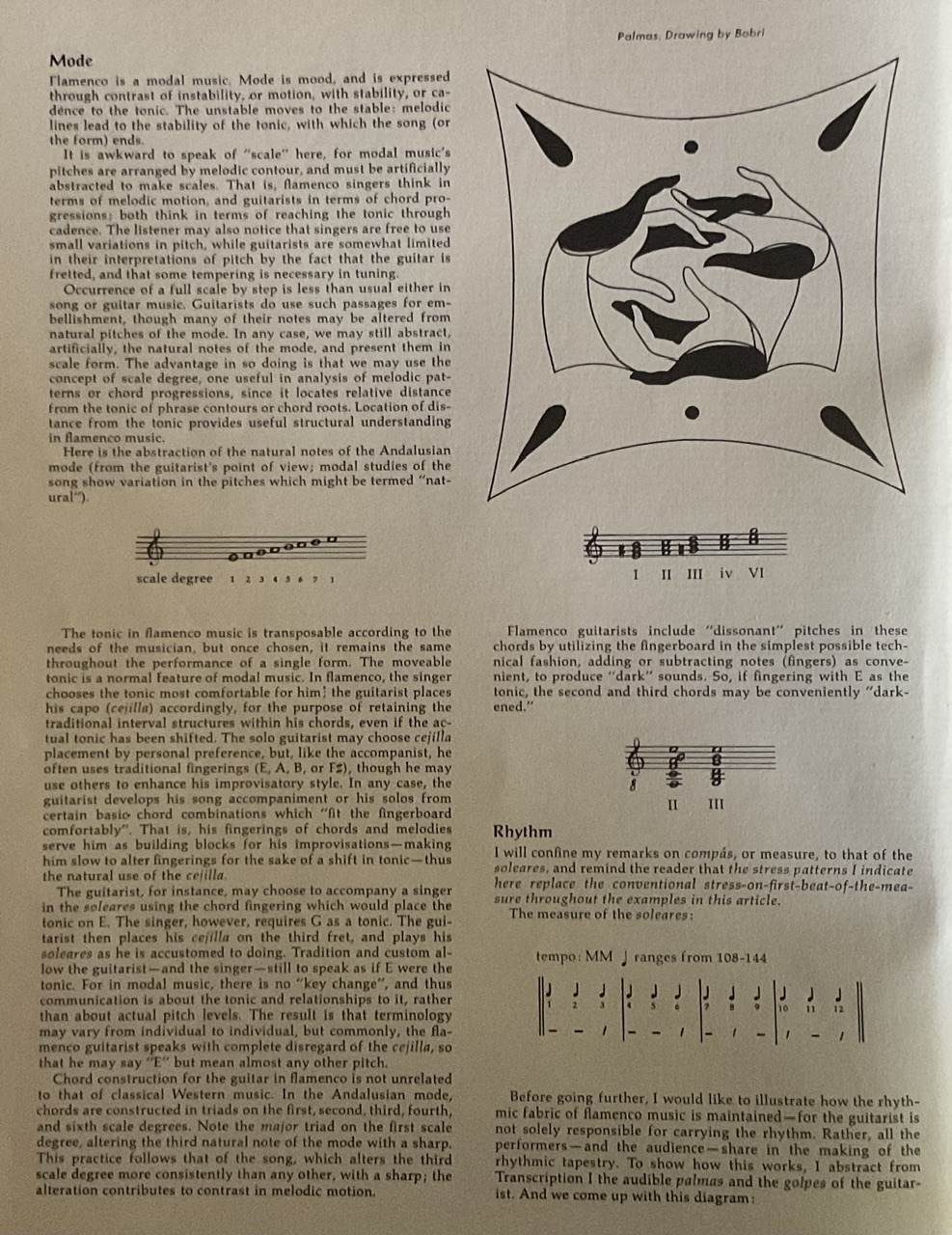
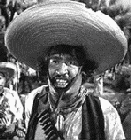
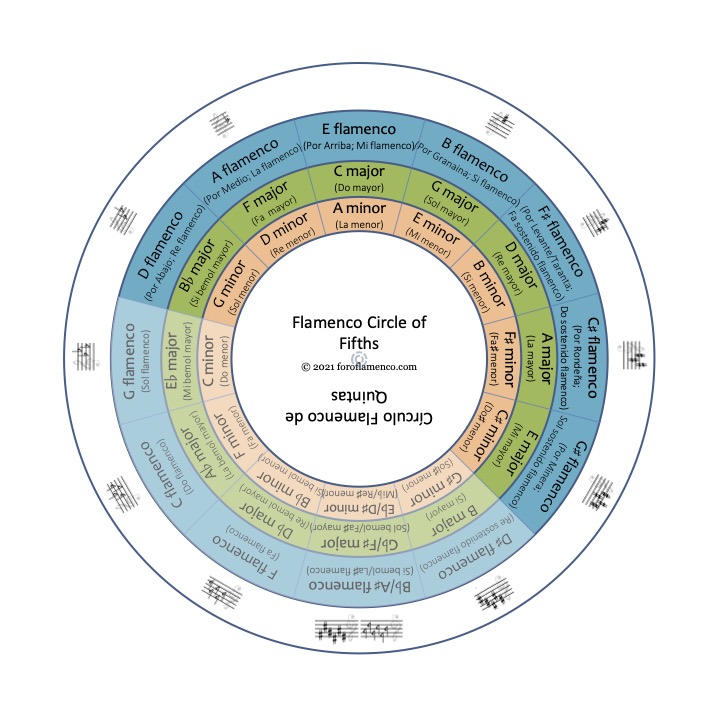
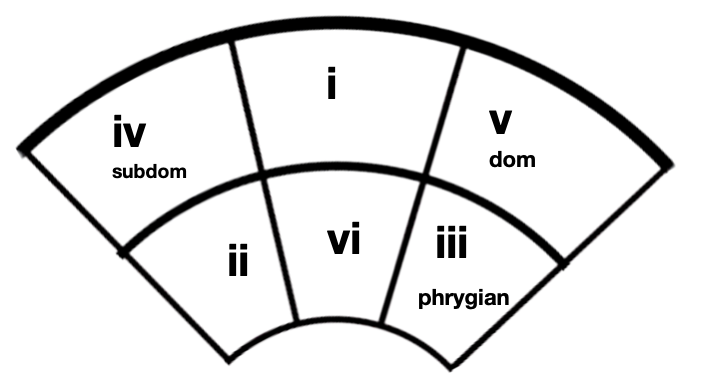
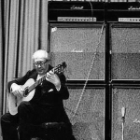
 New Messages
New Messages No New Messages
No New Messages Hot Topic w/ New Messages
Hot Topic w/ New Messages Hot Topic w/o New Messages
Hot Topic w/o New Messages Locked w/ New Messages
Locked w/ New Messages Locked w/o New Messages
Locked w/o New Messages Post New Thread
Post New Thread